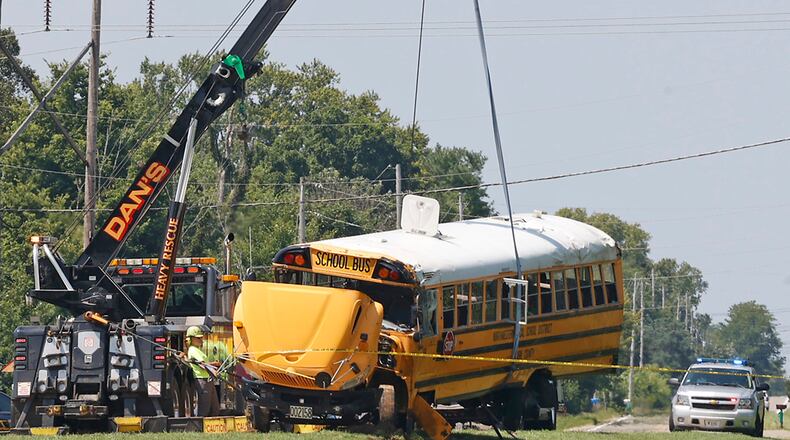Friday’s meeting focused largely on how school administrators and emergency crews can respond to bus crashes and deal with the unique challenges the situation creates. German Twp. Fire Chief Tim Holman, whose department was the first to respond to the scene after a minivan veered left-of-center and collided with a Northwestern School District bus and toppled it onto its side, recounted the county-wide response to the scene.
There were 51 people on the bus, Holman said. The first batch of responders, who arrived on scene just three minutes after the initial 911 call, worked to quickly evaluate the entire group and begin treatment on the two worst patients.
Others worked to secure the scene.
“You couldn’t do it very effectively because (you can’t) try to stop a mother from trying to take her child home,” Holman said. “...We train frequently for mass casualty incidents, but you can’t train for that.”
Despite the tragic outcome for Aiden Clark, an 11-year-old boy who was killed in the accident, Holman said he didn’t have any complaints with the emergency response. “I think people did the best job they could possibly do,” Holman said.
However, Holman admitted that reunification — the emergency practice of transporting students to a safe, designated location where they can meet with their families — was a “problem” amidst the chaos.
After the crash, the district directed busloads of students to be transported to the nearby fire station instead of its designated reunification site, a church about five miles away.
Holman said the reunification site was laid out in the school’s emergency operation plans, or EOP, but noted that real emergencies and the shock they can bring will often cause diversions from the plan. In this scenario, the diversion was that “no one looked at the EOP.”
As a result, some parents wanting to ensure their kids were safe either showed up at the actual scene of the crash or the nearby fire station, which had been overwhelmed by busloads of students, concerned parents, police and news media. The ensuing congestion interfered with the station’s ability to respond to other calls, too. “It’s just chaos,” Holman said.
“Reunification needs to be way, far away from the incident,” Holman said. “I think you’ll find that things go a lot smoother when that happens.”
In the coming month, the Ohio School Bus Safety Working Group will finalize its recommendations for school bus safety, which may be enacted into law by the Ohio General Assembly or taken under consideration by the state’s school districts, which have autonomy on decisions such as mandatory school bus safety belts and their emergency operation plans.
Andy Wilson, the director of the Ohio Department of Public Safety and head of the Ohio School Bus Safety Working Group — whose kids attend Northwestern School District — said the task force will release its recommendations in early January.
About the Author

